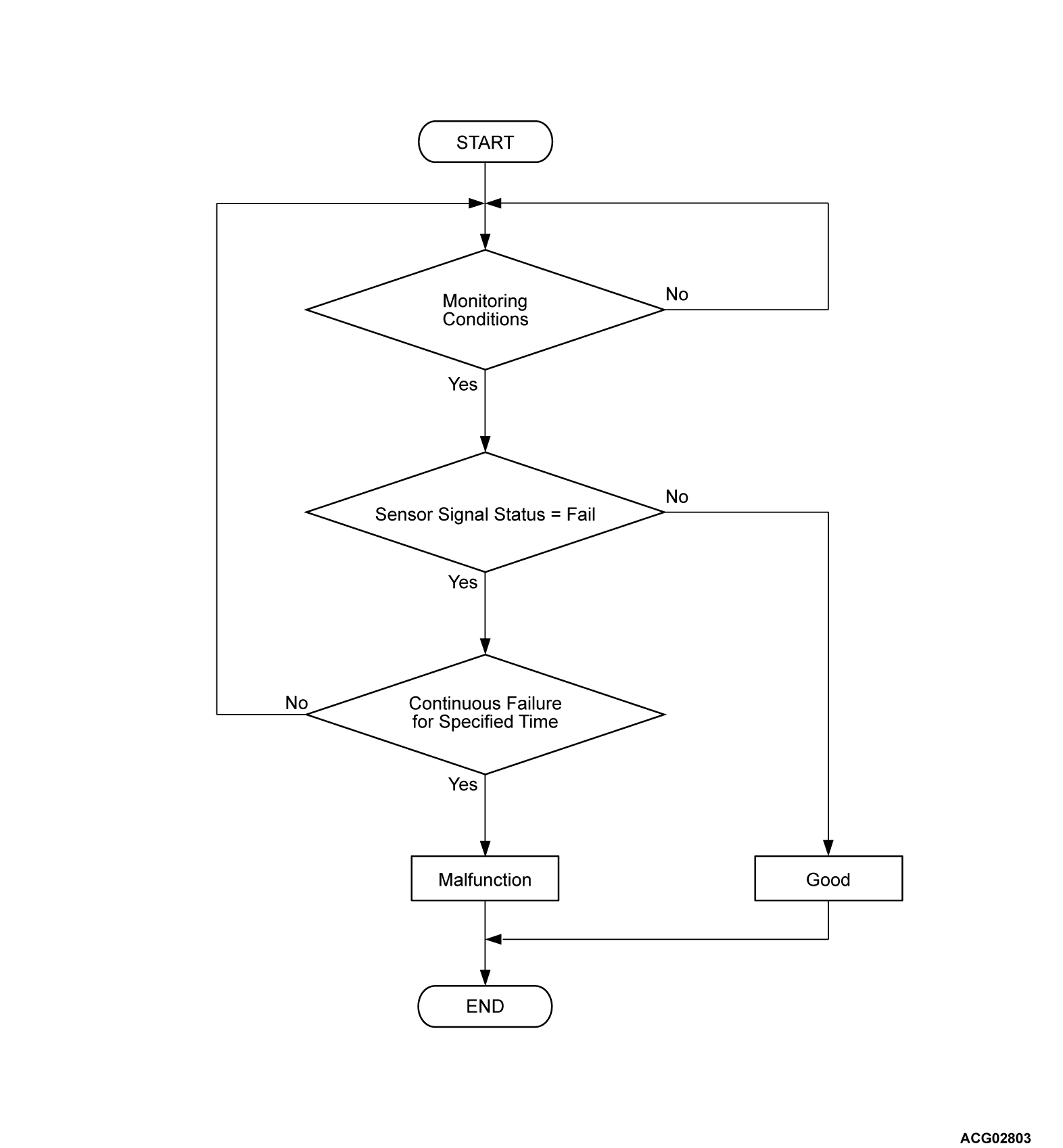DTC P1AAD: Battery Current Sensor Fail (CAN)
| caution | Whenever ECU is replaced, ensure that the CAN bus lines are normal. |
MONITOR EXECUTION
- Continuous
MONITOR EXECUTION CONDITIONS (Other monitor and Sensor)
Other Monitor (There is no temporary DTC set in memory for the item monitored below)
- Not applicable
Sensor (The sensor below is determined to be normal)
- Not applicable
DTC SET CONDITIONS
Check Conditions
- battery management unit (BMU) power supply voltage is 8 volts to 16 volts.
- Time after above conditions satisfy is more than 1 second.
Judgment Criterion
- Unable to receive main drive lithium-ion battery current sensor signals through the CAN bus line for 0.4 second.
FAIL-SAFE AND BACKUP FUNCTION
- Not available
PROBABLE CAUSES
- The main drive lithium-ion battery current sensor is failed.
DIAGNOSIS
Required Special Tools
- MB991658: Test harness
STEP 1. Measurement the voltage at main drive lithium-ion battery connector.
(1) Disconnect the D-33 main drive lithium-ion battery connector, and measure at the wiring harness side.
(2) Turn on the power supply mode of the electric motor switch.
(3) Check the voltage between the D-33 main drive lithium-ion battery connector (terminal No.2) and body ground.
OK: Battery voltage
Is the check result normal?
STEP 2. Measure the resistance at main drive lithium-ion battery connector.
(1) Disconnect the D-33 main drive lithium-ion battery connector, and measure at the wiring harness side.
(2) Check the resistance between the D-33 main drive lithium-ion battery connector (terminal No.3) and body ground.
OK: Continuity exists (2 Ω or less)
Is the check result normal?
STEP 3. Check of damage in line between main drive lithium-ion battery current sensor connector and joint connector.
(2) Disconnect the I-15 joint connector (19), I-16 joint connector (18) and main drive lithium-ion battery current sensor connector, and measure at the wiring harness side.
(3) Check the line between the following terminals.
- Between the main drive lithium-ion battery current sensor connector (IGCT terminal) and I-15 joint connector (19) (terminal No.2).
- Between the main drive lithium-ion battery current sensor connector (GND terminal) and I-16 joint connector (18) (terminal No.3).
Is the check result normal?
![[Previous]](../../../buttons/fprev.png)
![[Next]](../../../buttons/fnext.png)



